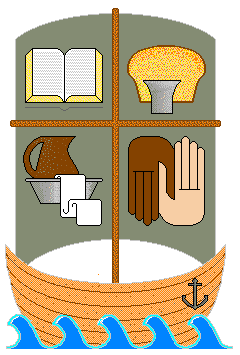Does Your Bible Have Doubting Footnotes?
Issue Date: July/August 2016
Most people don’t pay much attention to the notes in their Bible. But they were put there to be helpful, so, what do you think when you read this in your Bible:
(New International Version 1984)
Or this:
(New King James Greek-English Interlinear)
Or this:
(New King James Version)
So what are we supposed to think? The first one is pretty simple: Mark 16:9-20 is not reliable. The second and third ones are less direct; filled with unintelligible gibberish that only the highly initiated can decipher.
If we common folk get curious, what could we learn? First, I want to know —who says? Who is raising this doubt about this important passage that tells me about Christ being raised from the dead and His ascension? This even chips away at the Great Commission!
You say: “The Scholars!” Well, it was “scholars” who gave us the “theory” of evolution. And are they really being helpful here? This is my BIBLE! My eternal destiny depends on this book. And the scholars don’t know if these verses belong in it!? So, what else do they want me to doubt?
It gets worse. Author David W. Daniels says that when you research deeper into these scholars’ thinking, they claim that Mark was the first gospel written (about 80 AD, years after Mark was dead!) and these verses were probably added later by the “church.” Furthermore, the other three gospels were written even later, by who-knows-who, and based on Mark, so maybe they did not originally have anything about the resurrection and ascension, either. Luke 24:51 contains the only reference to the ascension of Christ in the Gospels, and it’s missing from Sinaiticus, as well!
See where this goes? All behind an “innocent” little footnote. But it gets even worse. The third example mentions the Sinaiticus and the Vaticanus. Sinaiticus is ¾ of a Bible written in Greek that was “discovered” in the mid-1800s. Vaticanus was held by the Vatican, seen by almost no one, until after Sinaticus was published. Again, the “scholars” decided, on dubious evidence, that they were really old, like around 300 AD.
Well, modern technology has given us a whole new look. Please notice that the third example states that “nearly all other manuscripts of Mark contain this.” Would you believe all 618 other Greek manuscripts? Why would TWO out-vote 618? The clue is in the first example: “the two most reliable early manuscripts.” The “scholars” again decided that these two are more reliable, simply because they are “early.” The assumption is that the closer you get to the “original autographs” that the apostles wrote, the more accurate. (Please remember that they believe the gospels were not written by the apostles, but someone later after 80 AD.)
Would you believe that almost no one was able to see the whole Sinaiticus until about 7 years ago? Pieces available were scattered from England to Russia. But now someone combined it all on the internet. And what Daniels has discovered looks very suspicions —but complicated. He has laid out a series of YouTube videos that raises serious evidence against the assumed age of both manuscripts. But, if they are not “oldest,” can they still be the “best?” No, because their being “reliable” depends on the fact they are so close to the “originals.”
But when Daniels looks at “best,” he learns that there are thousands of other discrepancies like the one in Mark 16. One-fourth of the books are missing from the Sinaiticus and both include the fairy tales called the Apocrypha, used by the Vatican to support some of its pagan doctrines.
